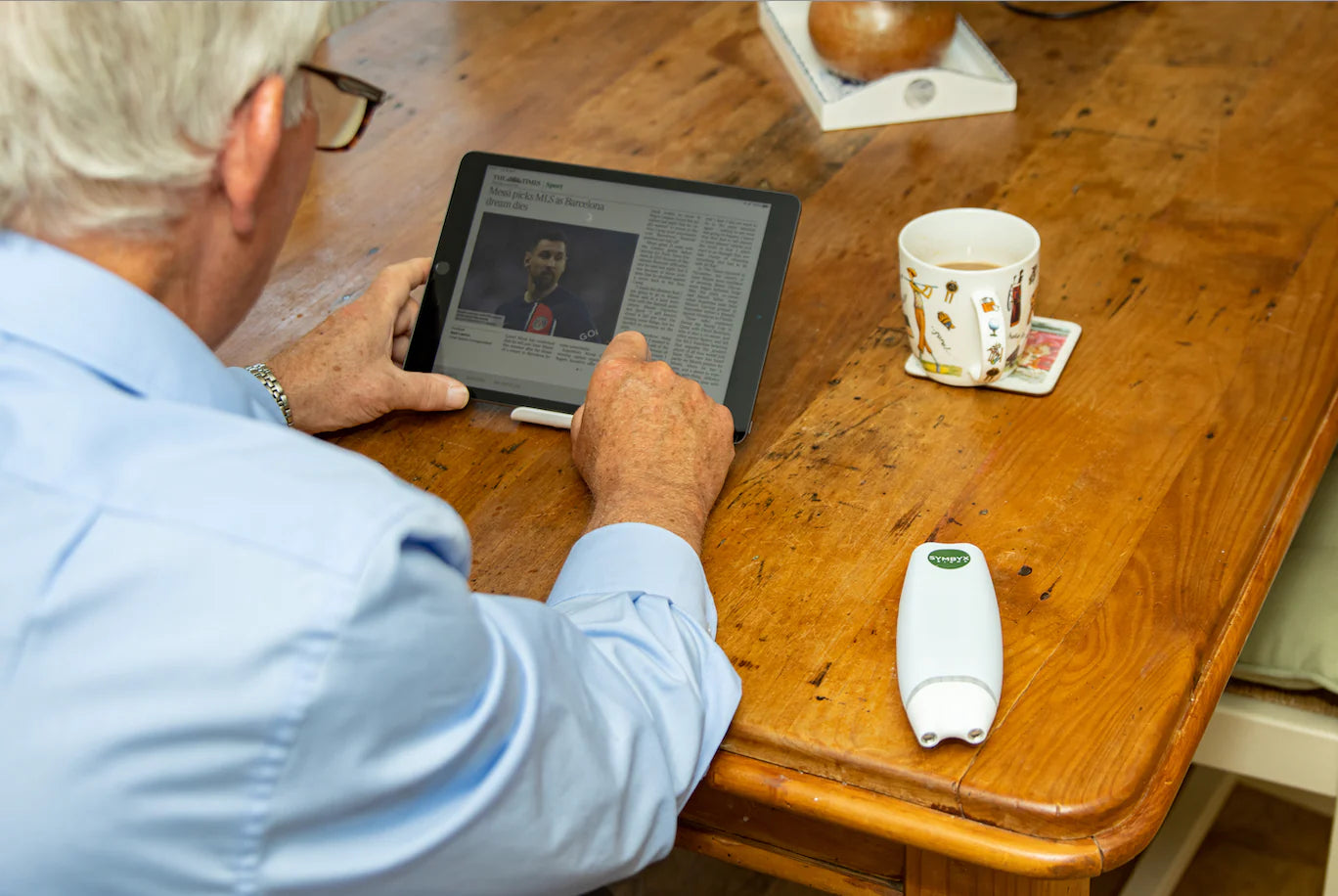
This week, Dr Liisa Laakso and Dr Tatjana Ewais, two expert medical practitioners working out of the Mater Hospital in Queensland, Australia, published a groundbreaking new study outlining the mechanisms by which light therapy helps people with Inflammatory Bowel Disease (IBD). Check it out here.
This publication goes hand-in-hand with a trial that is currently being run to test SYMBYX devices for a reduction in IBD symptoms. This is the world's first trial to test light therapy, also known as photobiomodulation (PBM), for a reduction in IBD symptoms. The trial is using SYMBYX devices. You can read more about that trial (being run in Australia) here.
What is IBD?
IBD is a chronic, autoimmune condition of the gut, that can be lifelong, and often begins in teenagers or 20 year-olds. The two most common kinds of IBD are Crohn's and Ulcerative Colitis. It is commonly characterised by periods of flare-ups, and can cause permanent damage and scarring to the intestines. It is often accompanied by abdominal pain, changes in bowel habits (diarrhoea or constipation), weight loss, anaemia, rectal bleeding, fatigue and depression.
So how does light therapy help IBD?
In this research paper, Dr's Laakso and Ewais argue that we must consider the effects of light therapy at a cellular level, as well as at a biopsychosocial level. In other words, we need to appreciate that light therapy has both cellular and whole-body effects, which consistently are resulting in improved quality of life and wellbeing for people.
When it comes to our bodies, they work a bit like a sporting team: not only do each of the individual athletes (the cells) need to be physically fit, the team also needs to communicate with one another and work together. It's important that this is stated, because IBD, like other chronic conditions including Parkinson's disease, Fibromyalgia, IBS and other chronic pain conditions, are due to changes in both cellular structures and cellular networks.
IBD is associated with a number of factors, including genetics, diet, the immune system, and the gut microbiome. It's the way these different factors interrelate that predisposes one to the condition.
Light therapy has a range of effects on the body, that can help with IBD, including:
- Reduce pain.
Not only tummy pain, but joint pain has also been closely associated with IBD. SYMBYX devices can be used on both kinds of pain.
- Reduce inflammation and oxidative stress.
In IBD, inflammatory markers are particularly high. Reducing these is a particularly important focus of any treatment for IBD. Light therapy is particularly beneficial at reducing pro-inflammatory mediators and oxidative stress. Evidence has shown that this occurs both locally (where the laser is applied), and centrally (to the spinal cord and brain). This is why applying laser to your gut can also help with brain inflammation, and poses a potential therapy for brain fog, and even depression.
- Positively influence the gut microbiome.
While this has been shown in people with Parkinson's disease, further research is needed to test this specifically for people with IBD.
- Stimulate the gut-brain axis.
This also includes stimulating the vagus nerve, which is very important for our "rest and relaxation" state, and reducing our "fight or flight" chronic stress response. This improves digestion, improves sleep, reduces stress, and enhances the body's ability to recover. When the vagus nerve is activated, blood flow is sent to the gut, to help the gut heal and repair, and help us digest and absorb important nutrients from food.
- Reduce fatigue.
Fatigue significantly impacts people with IBD. Light therapy improves cellular respiration- the process by which the mitochondria of the cell (the "engine house" of the cell) creates energy, known as ATP. Increased cellular energy often results in an increase in day-to-day energy- we intuitively know this by having more energy on sunny days. This is why SYMBYX devices are also being used by many sporting teams to naturally improve performance and recovery from training.
Is it safe?
Yes. In the thousands of studies published to date on light therapy, there have never been any serious adverse events reported.
However, not all light is made equal: too much or too little dosage won't cause a positive bodily response. We call this the biphasic dose response of light.
SYMBYX devices are the only medically-approved ARTG and CE-listed infrared devices that have been shown in the research to positively treat chronic medical conditions via the gut-brain axis by altering the gut microbiome. The specific wavelength that is used in our devices ensures the correct depth of penetration to the gut, important for anyone looking to treat IBD or other gut conditions, including IBS and Parkinson's disease. Therefore, you will not get the same results using red light- it needs to be a specific wavelength of infrared light, which is light that you cannot see with your naked eye!
Which SYMBYX device do we recommend?
This depends on your individual circumstances. If you have IBD, and you are interested in learning more about how SYMBYX light therapy may help you, then please contact our team at info@symbyxbiome.com. Our team of international clinicians are here to provide you ongoing support on your journey with light therapy for better health.
Please be sure to also subscribe to our newsletter to keep up-to-date with the latest advances in the recent IBD trial using SYMBYX light therapy.

